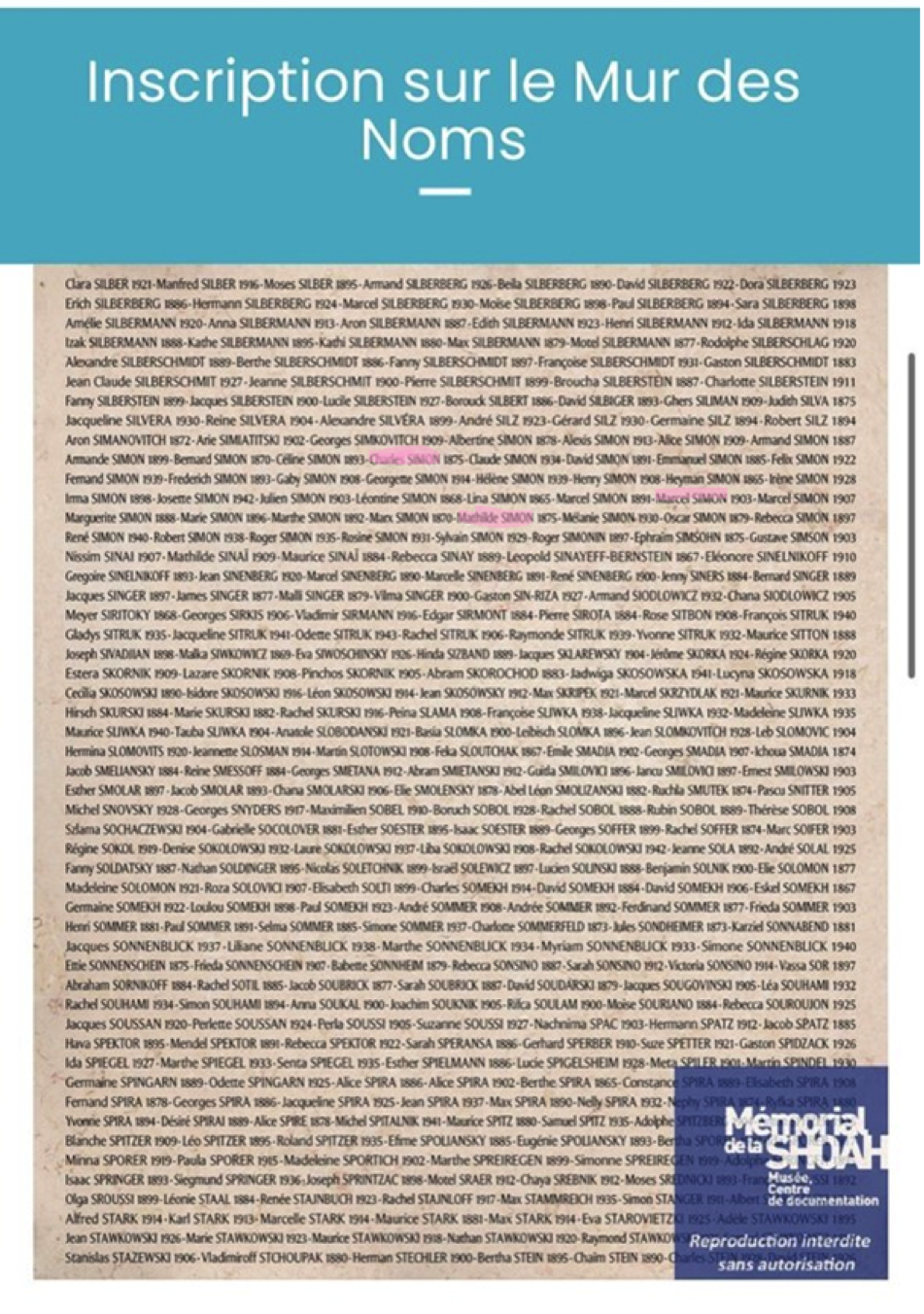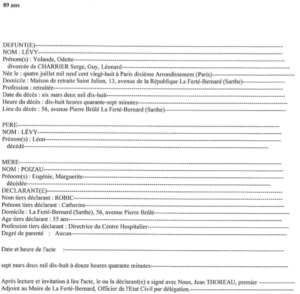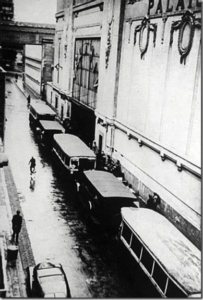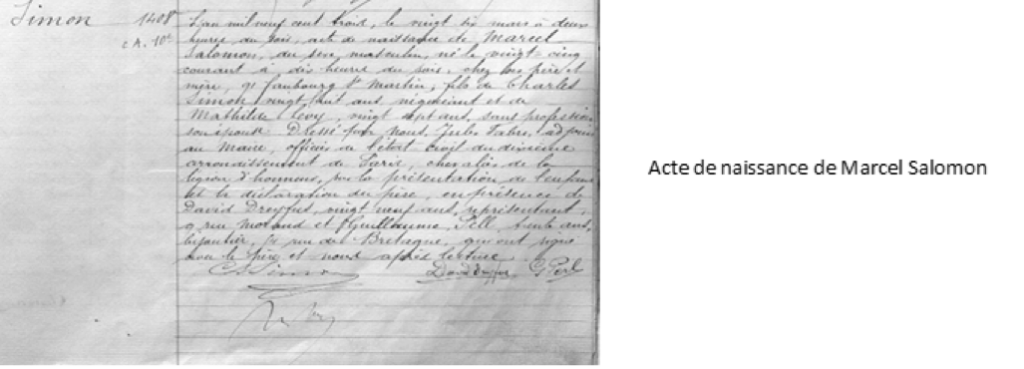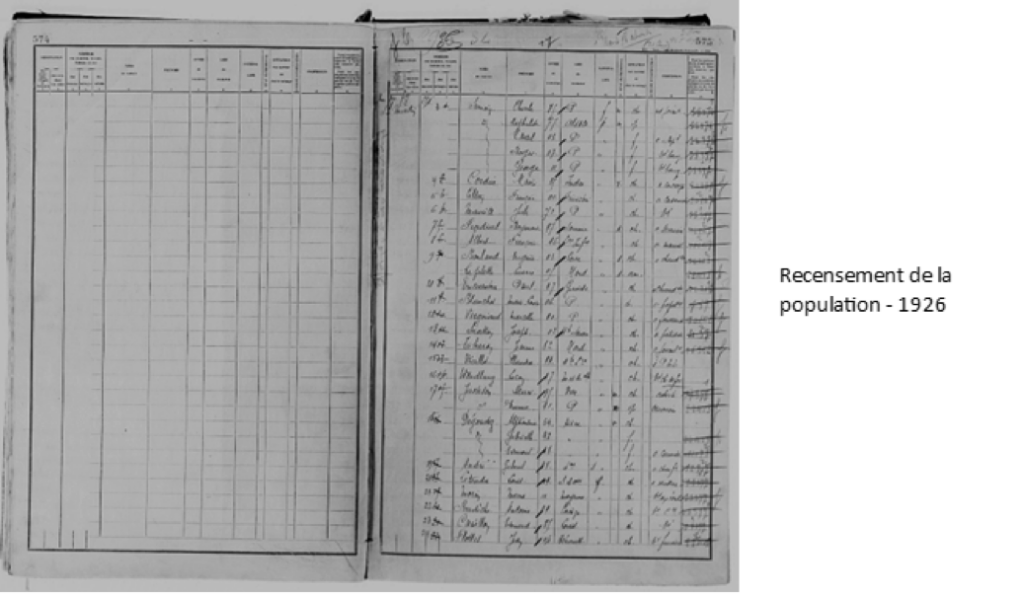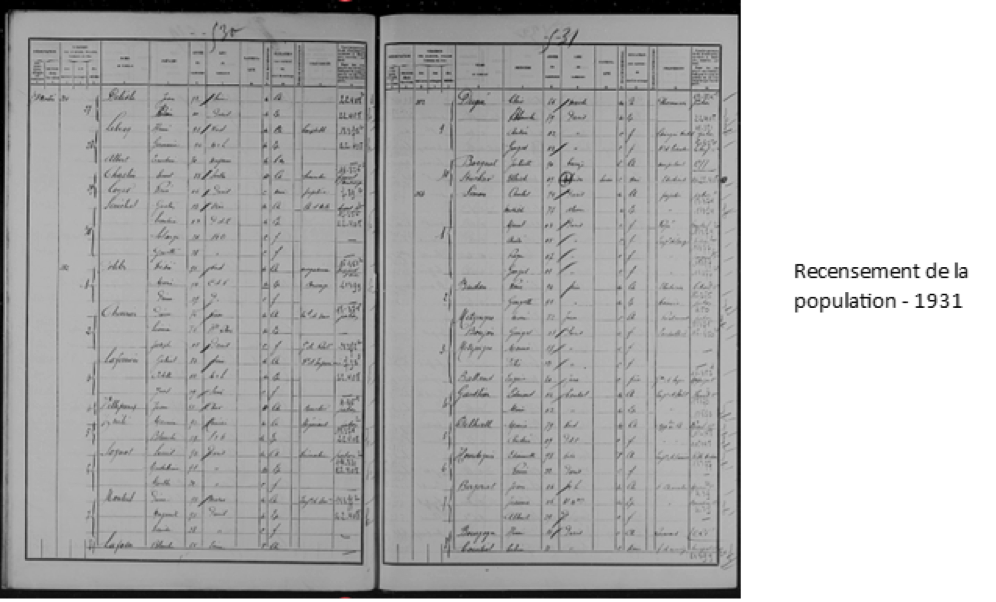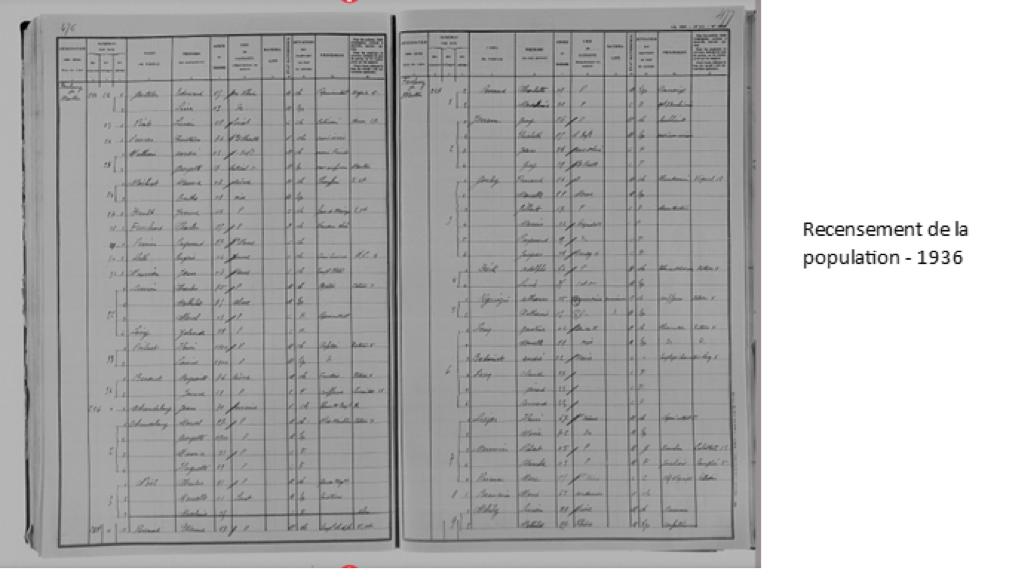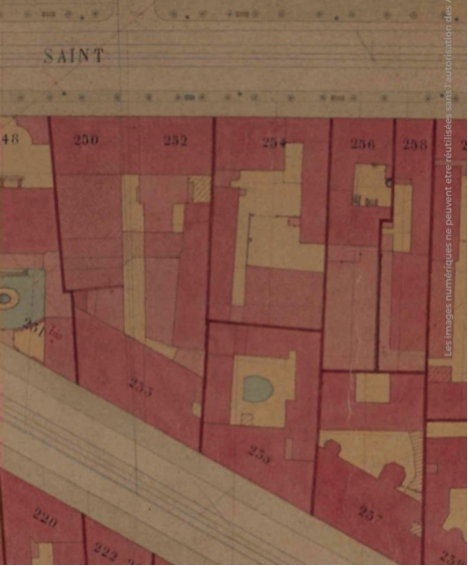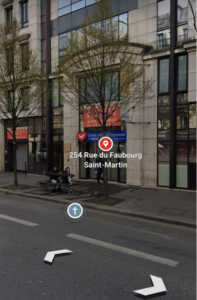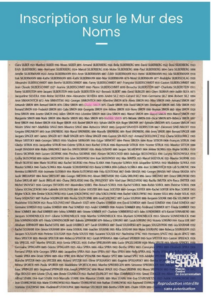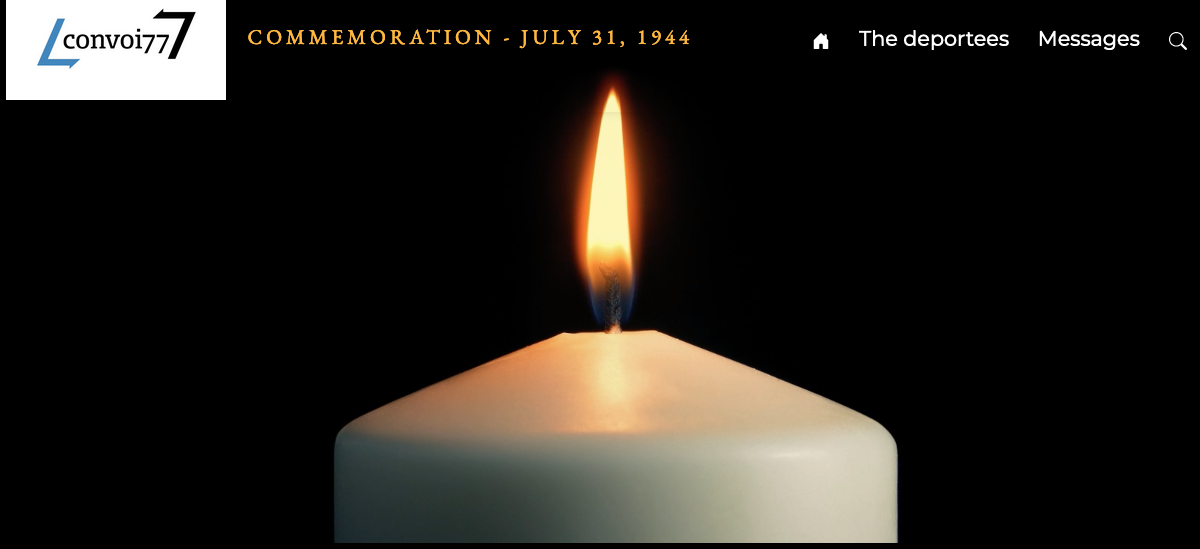Marcel SIMON
This project was carried out during the 2023-2024 school year by a group of 9th grade students from Les Blés d’Or secondary school in Bailly-Romainvilliers, in the Seine-et-Marne department of France, under the supervision of their French teacher, Ms. Jorrion, and their history and geography teacher, Ms.Garillière.
We wrote this biography as part of the Convoy 77 project. The Convoy 77 non-profit organization aims to bring together the families and friends of the people who were deported on Convoy 77 and anyone else who is interested in Holocaust remembrance. The aim of the organization is to keep alive the memory of the deportees, to tell their stories and to help pass on the memory of the Holocaust while also contributing to Holocaust research and education. In order to gain a better understanding of what happened to the people we were researching, we were lucky enough to have the opportunity to visit some key institutions involved in passing on the memory of the Holocaust in France, including the Shoah Memorial in Paris and the Les Milles camp in Aix-en-Provence, in the Bouches-de-Rhone department of France.
It should also be noted that Convoy 77 was the very last or the large transports of Jews from Drancy. It set off for Auschwitz on July 31, 1944, with 1,306 men, women and children on board.
We decided to focus on Marcel Salomon Simon, who was deported on Convoy 77, while our classmates concentrated on his mother and father. We chose this family because one of the teachers at our school has the same surname. We live in a town that was just a village during the Second World War, so there were no local deportees for us to write about.
Marcel Salomon Simon was born at 10pm on March 25, 1903 at 91 Faubourg Saint Martin in the 10th district of Paris. His parents were Charles Simon, who was born on January 28, 1875 in the 3rd district of Paris and Mathilde Simon née Levy, who was born on October 20 1875 in Soultz-les-Bains in Alsace. When Marcel was born, his father, Charles, was a salesman, and his mother, Mathilde, was not working at the time.
Through census records, we discovered that Marcel was the eldest of four children, and that he had three younger brothers: André Isaac Simon, who was born on November 30, 1905; Roger Alexandre Simon, born on December 3, 1907; and the last, Georges Edmond Simon, born on October 13, 1911. We note that in choosing the first names of the last two children, their parents gave up using Jewish names, which might suggest that they were keen to integrate into French society and to distance themselves from their Jewish roots.
Marcel’s brothers were all born at 254 Faubourg Saint Martin, so the Simon family must have moved there sometime between 1903 and 1905. We can tell from Roger’s birth certificate that by the time he was born, Charles had changed his job and Mathilde was working too: they had both become booksellers. Three years later, when their last child, Georges, was born, they had changed jobs again and were both working in sales. When he grew up, the youngest son became a bank clerk at 33 Avenue Ferrer in Pré Saint-Gervais, in the north eastern suburbs of Paris, as did his older brother, André, but he lived in Montrouge, south of the city. As for Roger, he followed in his father’s footsteps and became a salesman, based at 67 Boulevard de la République in Agen, in the Lot-et-Garonne department of France.
We were also able to ascertain from the 1936 census that a Yolande Levy, who was born on July 4, 1928, was then living with Charles, Mathilde and Marcel. As she was born in 1928, she would have been eight years old at the time. We discovered from Yolande’s death certificate that she was Marcel’s cousin. Yolande’s father was called Léon Levy, so had the same surname as Yolande. We can therefore conclude that Léon was Mathilde’s brother, so Mathilde was Yolande’s aunt and Marcel was therefore her cousin.
Yolande Levy’s death certificate © La Ferté Bernard town hall
Marcel was just a child during the First World War. He was born in 1903, so in 1914, the year the war began, he was 11 years old. By 1918, when the armistice was signed, he was 15.
Marcel never married or had children. He spent his whole life with his parents.
When Germany attacked Poland and the Second World War began on September 1, 1939, Marcel was 36 years old.
This was the start of what was known as the “Phony War” in France. Soldiers were stationed on the old First World War lines, but the German advance was a long time coming: they did not launch their first attack until May 1940. They first invaded Belgium and then attacked the French from behind. The French, of course, were completely unprepared for this and mayhem ensued. The French soldiers fled to the west and southwest while the German army continued to advance towards Paris.
For the civilian population, this began what was known as the exodus: everyone tried to move south and many people took to the roads. Marcel was not one of them however, as his parents decided to stay on in Paris. On June 18, 1940, the French General Charles de Gaulle called for the country to resist, but on June 22, 1940, the armistice was signed in the forest near Compiègne: France surrendered and Marshal Pétain took power as head of the Vichy regime.
In October 1940, the Vichy regime began to collaborate with the Nazis. From that moment on, life became increasingly difficult for the Jews living in France. A decree on the status of Jews was enacted on October 3, 1940. It banned Jews from working in a wide range of occupations, including all management roles, all jobs involving contact with the public, all civil service positions and in some public service jobs. Posters were then produced, which depicted a “typical” Jewish “profile” (a hooked nose, dark brown hair, etc.) and the Nazis asked the Vichy government to carry out a census of the entire Jewish population in France. The census records made it easier to arrest the Jews. We discovered in Shoah Memorial archives that Marcel and his parents went to register themselves in 1943.
In the spring of 1942, it became compulsory for Jews to wear the yellow a star, which had to be sewn onto their clothing. The stars were issued in exchange for ration tickets, but this was not the solution for everyone; some people, such as large families, could still not afford to buy food and other necessary items.
The French and German authorities came up with various trivial excuses to arrest Jews: a star that had been sewn on incorrectly, for example, or when they took off their jacket but had no star on the clothing underneath. Jewish people had to be on their guard at all times.
Shortly afterwards, on July 16 and 17, 1942, the Vel d’Hiv roundup took place. The French state organized and carried out the roundup in order to appease the Germans. The French police, with the help of 9,000 gendarmes and police officers, arrested as many Jews as they could find in Paris. They arrested a total of more than 13,000 people. Families with children under the age of 16 were all taken to the Velodrome d’Hiver (winter cycling track), where they were held until they were transferred to internment camps. Everyone else was taken straight to Drancy camp, where they were interned and then deported to Auschwitz. Only one photo was taken during the entire roundup.*
Luckily for Marcel, Charles and Mathilde, they were not caught during the roundup. We have no information as to why this was. Our hypothesis is that they either went into hiding during the round-up or were tipped off by neighbors or police officers.
The Vel d’Hiv roundup. Photo © Shoah Memorial, Paris/BHVP collection.
From June 1940 to August 1944, the Germans occupied France, and banned foreign radio stations and contact between Jews and non-Jews. On January 25, 1943, when Marcel’s parents’ bookshop was “Aryanized”, he lost his job as their assistant. In May 1944, the Nazi collaboration who took over the shop resigned as its administrator because it was not making enough profit. We discovered during our visit to the Shoah Memorial that he then sold the shop for 30,000 francs despite it having recorded a turnover of 137,745 francs in 1936, although in 1940 it had dropped to 96,760 francs.
The Sicherheitspolizei (German security police) arrested Charles, Mathilde and Marcel Simon on July 27, 1944 for continuing to run their former business, where, according the the arrest register, they were “engaged in propaganda for foreign radio stations”. In reality, Marcel and his parents had no involvement in spreading propaganda; they simply had to go through the bookshop downstairs from their apartment to get out onto the street. This meant they had to make their way through their old shop, which was now off-limits to Jews, and cross paths with the customers, which was also not allowed. According to the Shoah Memorial archives, the German militia arrested Marcel at his home on July 27, 1944, although the Yad Vashem records give the date as July 20, 1944. We have no way of verifying which date is correct.
Marcel was sent to Drancy internment camp, where the letter B was entered on his registration card, meaning that he could be deported at any moment. He was assigned the serial number 25,335. Based on a map of Drancy camp, we were able to work out that he was sent to a room on staircase 3, Mathilde was sent to a room on the third floor on staircase 18, and the fifth floor was for men only.
Conditions in the camp were appalling. We discovered that the camp buildings were unfinished, with few interior walls and only a rough concrete floor. In fact, only the main structure had been completed.
There were very few toilets, which quickly became blocked due to the large number of internees, and there was only an outdoor faucet for them to wash themselves, which was barely even usable in winter due to the freezing cold and the wind. In summer, however, the temperatures were unbearable: the lack of ventilation and the large number of people retained the heat.
The internees slept in very cramped accommodation. Disease was rife due to overcrowding and poor sanitation. The interior of the camp was dark and gloomy due to the lack of light. The windows were painted blue as the Nazis were likely to bomb the building if they spotted any signs of life.
Marcel was deported on Convoy 77 on July 31, 1944, at the age of 41. He was taken on a Paris city bus from the Drancy camp to Bobigny station, where he was loaded into a cattle car. The train took three days and three nights to cross through France and across Germany. Up to 60 Jews were crammed into each cattle car, with only one bucket in which to relieve themselves and one bucket of drinking water for the entire journey.
When the train arrived in the early hours of the morning, the deportees disembarked onto the ramp at Auschwitz Birkenau and the selection process took place immediately. Men and women of who were of working age and in good physical shape were taken into the concentration camp to work. Everyone else, including young children, senior citizens and disabled people, were not put to work but sent straight to their deaths. They were taken to the gas chambers immediately: the Nazis made them get undressed and then gassed them with Zyklon B. This type of gas was only used in Auschwitz-Birkenau.
Sadly, Marcel and his parents were sent straight to the gas chambers on account of their age: Mathilde was 68, Charles 69 and Marcel 41. There are two possible explanations as to why Marcel was killed immediately, despite being only 41. Our first hypothesis is that he helped his parents, who were weaker than him, climb onto the waiting trucks when they first arrived at the camp. The second is that as a result of all the restrictions and food shortages, he looked too thin and weak to be able to work. There is no record of Marcel having entered the camp. Under French law, they were later officially declared to have died in Auschwitz on August 5, 1944.
The Auschwitz camp was liberated on January 27, 1945.
Marcel was still a single man when he was deported at the age of 41, and had no direct descendants. His brothers each made separate applications to have him entered on the civil register as a non-returned person, which was done on April 30, 1946. By doing so, they hoped to have his death officially recorded and to have him recognized as a war victim on the grounds that he had been deported because he was Jewish. The fact that a number of requests were being made for the same person seemed to slow down the process. André eventually collected the necessary documents and the compensation payment, which he then shared equally between himself and his brothers. We know all this through the various records that we found.
Archives
The eight records above all come from the Paris archives: https://archives.paris.fr/r/123/archives-‐numerisees
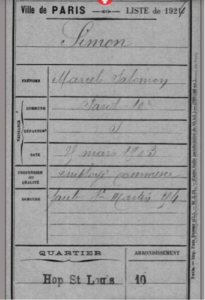
Marcel Simon’s national service recruitment card.
An old map of the Saint-Louis Hospital area of Paris.
The Simon family lived at 254 Faubourg Saint Martin during the war. From the Paris archives at :
https://archives.paris.fr/r/123/archives-‐numerisees
The Simon family members names on the Wall of Names at the Shoah Memorial in Paris:
https://www.memorialdelashoah.org


 Français
Français Polski
Polski